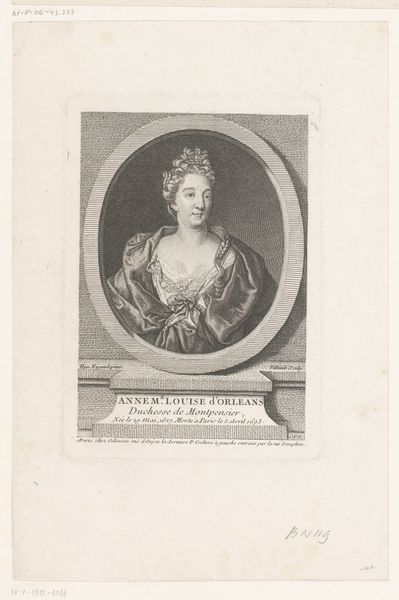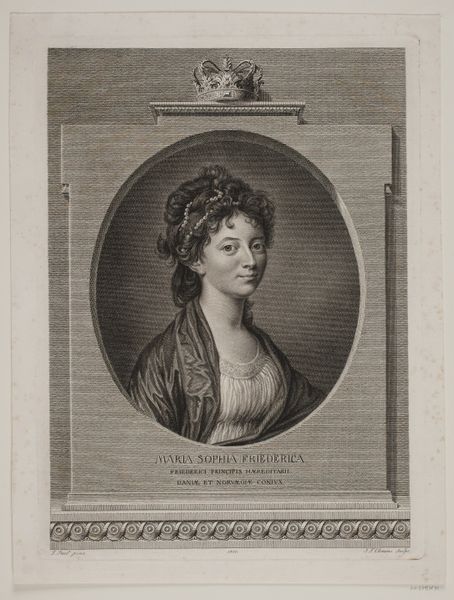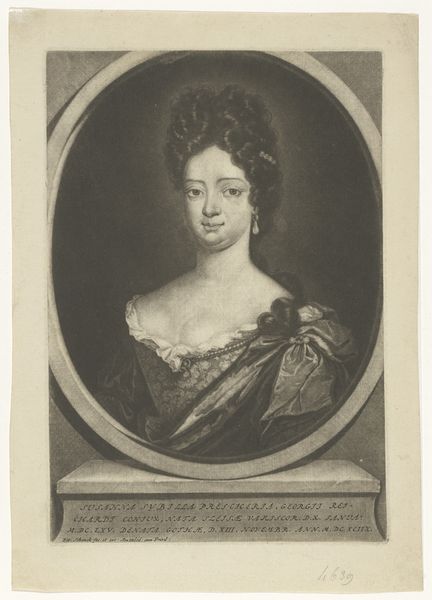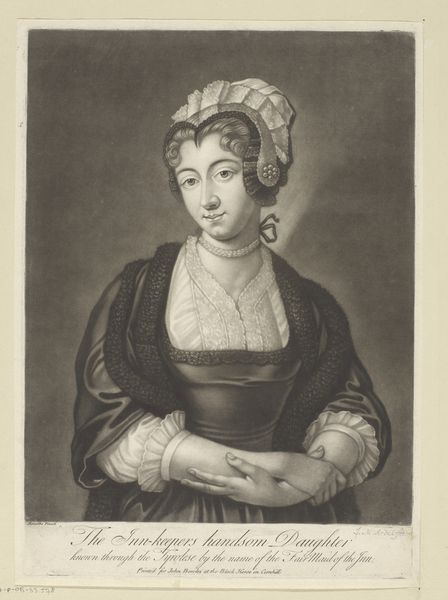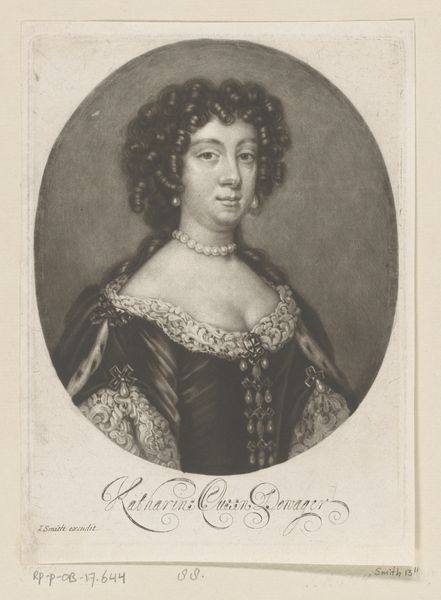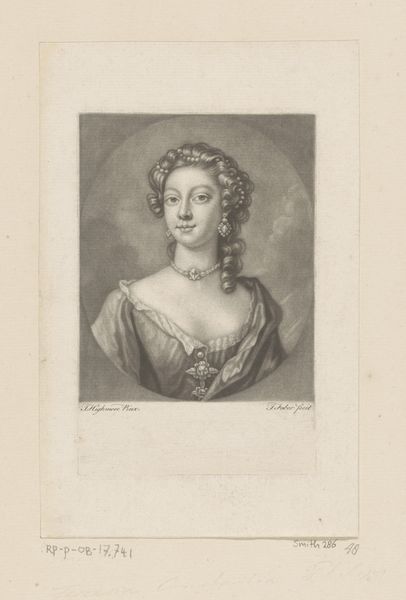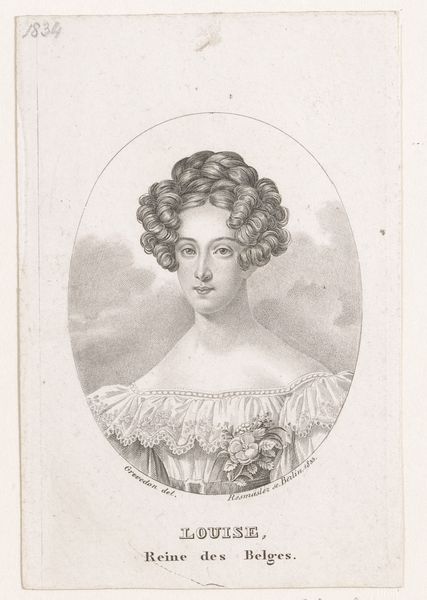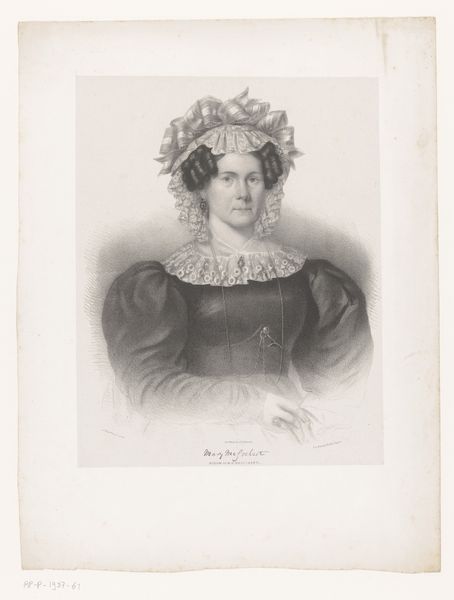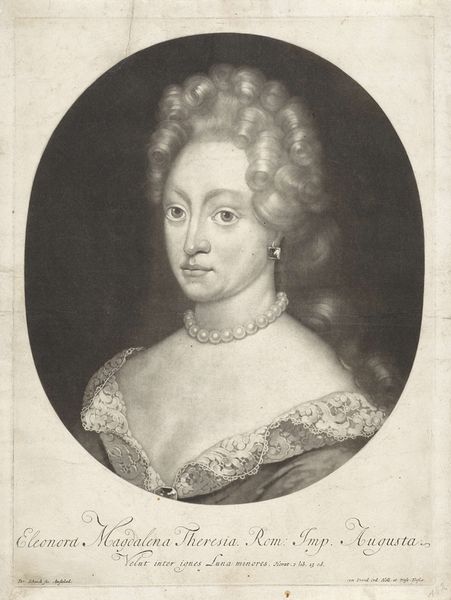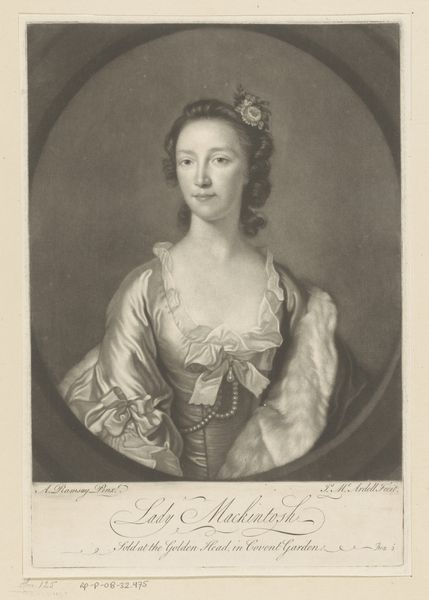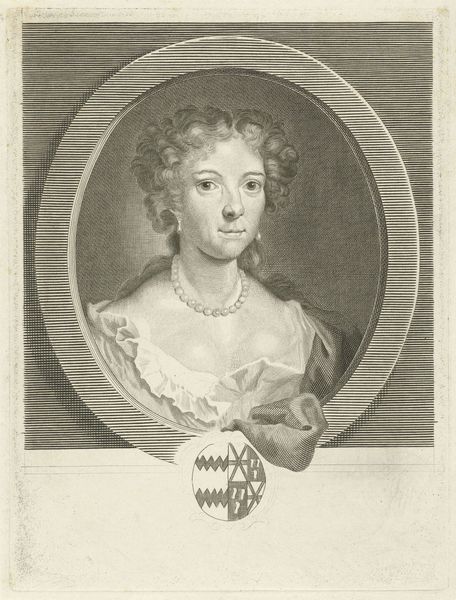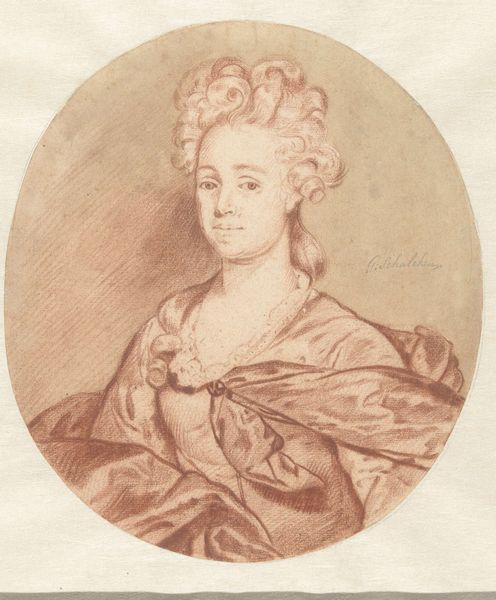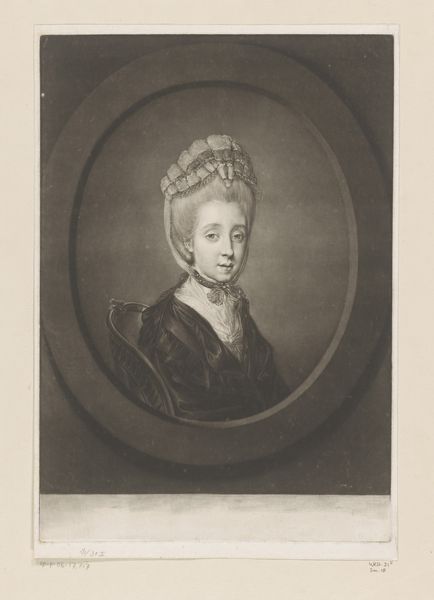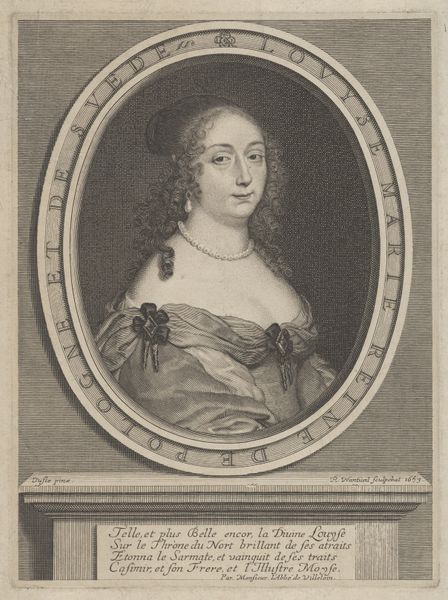
Portret van Luise Katharina, Gräfin Truchseß zu Waldburg 1821
0:00
0:00
print, engraving
#
portrait
#
pencil drawn
#
neoclacissism
# print
#
pencil sketch
#
line
#
pencil work
#
engraving
#
realism
Dimensions: height 193 mm, width 117 mm
Copyright: Rijks Museum: Open Domain
Editor: So, here we have a portrait from 1821 titled "Portret van Luise Katharina, Gräfin Truchseß zu Waldburg" by Friedrich Wilhelm Bollinger, rendered as an engraving. I’m struck by its delicate lines, a rather understated approach compared to the bombastic portraits of the time. What jumps out at you? Curator: Considering this engraving, I find myself contemplating the labour involved in its production and the implied social dynamics. How was this print originally circulated? Was it meant for mass consumption, fostering a sense of familiarity with the Countess across a broader segment of society, or was its distribution limited to a privileged elite? Editor: That’s interesting, I hadn’t thought about who the audience was! Do the materials used affect the impact the work has? Curator: Absolutely. The choice of engraving implies a specific production process, and potentially, an aspiration towards wider accessibility through reproducible imagery. But, of course, accessibility during this period had many barriers. The scale and skill needed suggest patronage and skilled artisanship in a workshop setting. What kind of social statement does it make, when translated to a multiple? Editor: I see. It’s more than just a picture of a Countess, it’s about the systems that allow the image to exist. Considering how images of nobility usually showed power, this understated choice of technique now appears very interesting to me. Curator: Precisely. This "simple" portrait provides rich insight into social structures and power dynamics. Looking at the material tells you the intentions and purpose.
Comments
No comments
Be the first to comment and join the conversation on the ultimate creative platform.
